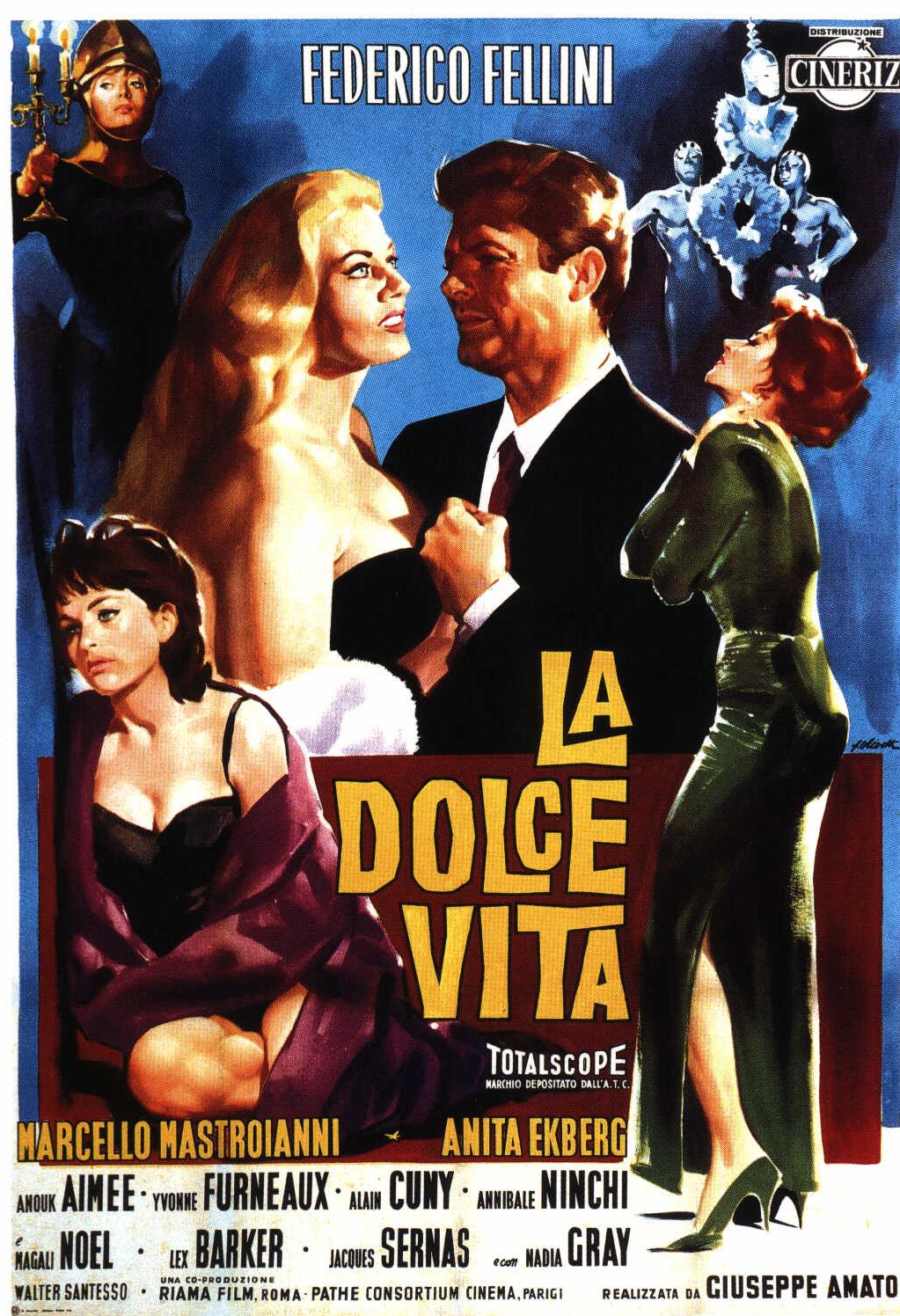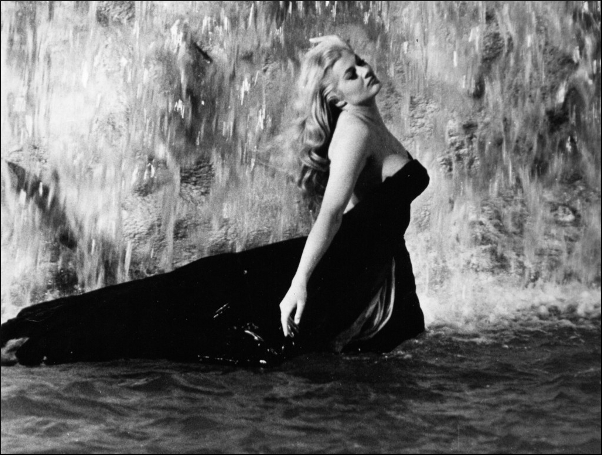
- La dolce vita
- 180 minutes - Drama
- Original title: La dolce vita
- Director:Federico Fellini
- Language: Italian
- Country: Italy
La Dolce Vita is undoubtedly the most representative film by Federico Fellini, the famous Italian director.

La Dolce Vita is undoubtedly the most representative film by Federico Fellini, the famous Italian director.
La Dolce Vita is undoubtedly the most representative film by Federico Fellini, the famous Italian director. He wrote it alongside Ennio Flaiano, and it marks the director’s passage from neorealism to his more multifaceted, personal, and surrealistic vision. The movie is set in Rome during the immediate post-war era, during the late fifties and early sixties. Marcello, played by Marcello Mastroianni, is a young journalist who dreams of being a professional and acclaimed writer. He mingles with different social classes in Rome: the poor, who are employed reconstructing the city after the war, and the bourgeois, who in this period have become confused with the “stupid and decadent aristocracy.” Marcello maintains contact with diverse groups of people, from the prostitutes of the suburbs to the aristocrats of the so called “dolce vita” (sweet life) of nightlife, cinema, music, and beautiful women. Among the latter, Marcello sees the worst things past a façade of wealth, as the end reveals.
The movie had many positive reviews upon release. It was defined by critics as a real cross-section of contemporary Rome. Although Fellini’s style would later grow more fantastic, his point of view here is still more or less realistic. There are scenes of people guiding sheep through the main streets of the Eternal City and a crowd of devout Christians who believe the Virgin Mary has made an appearance. There are strong references to current customs, traditions, and commonplaces: a famous Swedish-American actress named Sylvia (played by Anita Ekberg) is welcomed with the “tipico e gustoso prodotto italiano” (that is, pizza). We also see the Rome of the “dolce vita,” the flourishing city during the period of economic growth, liberated customs, and the mark of Americanization (a young Adriano Celentano sings rock n’ roll). Linguistically, the characters speak Romanesque. It’s possible to hear typical expressions, like “bella bisteccona,” which here refers to Anita Ekberg, and functions as a vernacular way of saying that she is very nice. Another common expression is “‘n par de sacchi,” “sacco” being a dialectal term for a monetary coin, usually identified with the old sum of 100 thousand Italian “lire.” There is also the phrase “te se magna vivo,” meaning that someone has easily overwhelmed you (“te”). Moreover, Romanesque is identifiable because the “l” consonant is swapped for an “r” in articles, prepositions, and other words: for instance, “er” replaces “il,” “cor” replaces “col,” and “sordi” replaces “soldi” (money).

Obviously, in multicultural Rome, it is possible to hear many different variants of the Italian language, such as Milanese (spoken by a paparazzo, who often says the typical “né,” meaning “not”) or Bolognese (like Marcello’s father, who replaces the “z” consonant with “s,” as in “piassa” for “piazza”). It is also curious to hear foreigners’ Italian. The character of Fanny (Magali Noel) speaks Italian with a French inflection, while Steiner (Alain Cuny) and Nico (Andy Warhol’s future muse and Velvet Underground singer) talk in German-Italian. And obviously, there’s Sylvia: everyone remembers her notorious scene in the Trevi Fountain, where she calls out, with her Swedish-American accent, “M’rcèllo.” The movie won the Palme d’Or at the Cannes Film Festival and it doubtlessly has continued to grow in importance, spreading its director’s name around the world.
